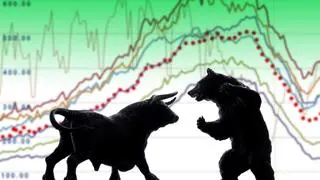Global economies have been doing well with strong growth recoveries in G7 and emerging economies. This is the second longest global economic expansion in history; yet, the euphoria and enthusiasm that follows strong global growth is missing and the mood is circumspect. Despite strong growth data, the equity markets across developed and emerging markets have been on a retracement path and most of them are now yielding negative returns year-to-date. What’s troubling the equity markets?
Over the last decade, markets have been driven by stimuli from governments and central banks. But policy-makers in most major economies are now either taking their foot off the accelerator or applying the brakes. Fiscal policy in advanced economies is expansionary this year, but will be less so in 2019. The ECB is set to end QE in December and the Fed will probably raise interest rates steadily until well into 2019.
Economy not so strong
The Fed has raised rates eight times in this cycle and continues to remain sanguine about the economic outlook. But the equity markets are concerned about the growth outlook and do not share the optimism of the Fed. Rise in interest rates has a lagged impact on the real economy and the equity markets’ concern is that the economy might not be as strong as it appears. The circumspection of the real economy has had a rub off effect on global equity markets.
Unemployment in the US has been at record lows and has touched 3.7 per cent. Such low levels should have logically led to wage inflation of 4 per cent+, but, surprisingly, the average hourly earnings growth this cycle has been modest at 2.8 per cent. The stimulus in the US in terms of tax cuts and repatriations from tax heavens abroad have been used more for share buybacks rather than making investments in the real economy. The real private sector non-housing capex in the US economy continues to remain weak and has grown at a modest 6.4 per cent. This year’s strong earnings growth of 21 per cent in the S&P 500 is driven by tax cuts and the consensus for next year is a more normalised 9 per cent growth.
While the Fed has been unwinding its balance-sheet, the other major central banks, including ECB and BoJ, have continued to expand their balance-sheets. But the ECB may start unwinding its balance-sheet next year and, as a result, in 2019 for the first time, the combined balance-sheet of all G7 central banks will start contracting.
The world is moving from quantitative easing (QE) to quantitative tightening (QT).
The China factor
China’s efforts to de-leverage the private sector and clamp down on shadow banks and polluting industries are leading to slowdown in the economy. On top of that, the trade spat with the US is creating another layer of uncertainty at the most crucial time for China, when it is in the process of rebalancing its own growth. Chinese equities are down sharply with the CSI300 Index down over 20 per cent year to date.
Thus, while growth is strong and economic data robust, equities are a forward-looking asset class and the circumspection of the equity markets is not fully unwarranted. The questions facing investors are: In 2019, will the US growth moderate or will its economy slump into recession? It appears that it should be a case of growth moderation. While the Fed has been raising rates, the weak wage growth and moderate profit growth imply that the economy is not overheated.
A benign global growth environment would lead to stable commodity prices, strong capital flows to EMs and relatively weak dollar. This is not a bad outcome for India, provided it can capitalise on the structural reforms executed over the last few years and accelerate investments in the domestic economy to achieve double-digit growth.
The writer is founder of Renaissance Investment Managers








Comments
Comments have to be in English, and in full sentences. They cannot be abusive or personal. Please abide by our community guidelines for posting your comments.
We have migrated to a new commenting platform. If you are already a registered user of TheHindu Businessline and logged in, you may continue to engage with our articles. If you do not have an account please register and login to post comments. Users can access their older comments by logging into their accounts on Vuukle.